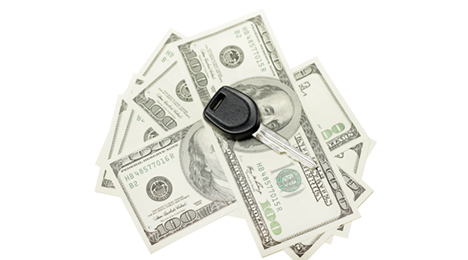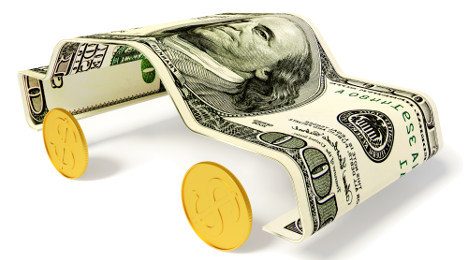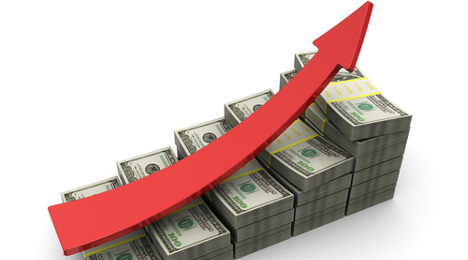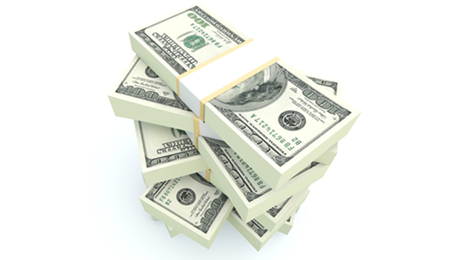For dealers and finance companies with business interests in the Midwest, Huntington Bank’s third annual Midwest Economic Index is offering an encouraging forecast for possible deliveries and originations.
The index showed 16 percent of consumers in the region definitely will purchase a vehicle in 2015. Huntington indicated the response represents a 10-percent increase over definite intent for vehicle purchases in 2014 and is a “clear sign of optimism” among consumers interviewed in Indiana, Michigan, Ohio, Pennsylvania and West Virginia.
“It’s still a great time to buy,” Huntington Auto Finance director Rich Porrello said. “Consumers are benefitting from low interest rates, high trade-in values and a wide range of manufacturer incentives.
“Add to that enthusiasm for an outstanding 2015 model year, falling gas prices and the ongoing economic recovery, and we’ll continue to see strong buyer demand throughout the year,” Porrello continued.
In comparison to consumers with definite plans to purchase a vehicle in 2014, the Midwest Economic Index revealed increases of 13 percent in West Virginia, 12 percent in western Pennsylvania, 11 percent in Indianapolis, 9 percent in Michigan and 8 percent in Ohio.
Referencing an IHS Automotive study based on Polk Co. registration data, Huntington pointed out the average vehicle on American roads continues to run more than 11 years old, leaving the industry poised for a sixth consecutive year of growth in the number of vehicles sold.
In line with this growth, Huntington experienced its fifth consecutive year of record loan production in 2014. With loans totaling $5.2 billion, Huntington financed more vehicle than any other time in its 60-year history serving the automotive industry.
During the year, Huntington added hundreds of dealers to its network, which now totals more than 3,700 dealers in 17 states.
Additionally, Huntington highlighted that it flourished in super-prime lending, serving dealers locally and delivering 70 percent of indirect loan decisions within 3 seconds or less.
Exeter Finance Corp. completed the launch of its new originations platform this week; a process the company insisted can reduce the typical decision time to under 15 seconds.
Additionally, Exeter highlighted that it is now able to restructure the loans in real time.
As a result of the full rollout of the new system, all Exeter loan applications will be processed through two operations centers — one in Irving, Texas and the other in Clearfield, Utah — enabling faster and more efficient application processing and a higher level of service for dealers.
“Exeter has created a strong national footprint utilizing a traditional branch model, growing its portfolio from $150 million to $2.8 billion in the past three years,” Exeter chief executive officer Tom Anderson said. “However, we recognize the importance of adapting our business to accommodate the need for more expedient loan processing and higher service. Fundamentally, we have a goal of driving additional sales and customer loyalty in the dealership.”
Anderson emphasized that the changes will occur in a phased implementation to ensure a seamless transition for employees and dealer customers.
Exeter went on to mention the company continues to invest in tools to better support its dealer customers. Exeter’s new program typically provides decisions in 15 seconds or less, while still offering dealers the ability for rehash and personalized service.
“Our new structure allows the dealer to provide immediate offers to the end consumer, potentially generating more sales within the dealership and improving customer satisfaction rates overall,” Anderson said.
Anderson pointed out that consumers are demanding a quicker vehicle purchase process, driven largely by their increasing reliance on technology to better educate themselves, even before entering the dealership. As a result, the Exeter CEO thinks both dealers and finance companies alike are adapting business models to better accommodate the consumer's preference.
“We look forward to the opportunities for growth and change in 2015,” Anderson said. “We will continue to serve our dealers and end consumers in the most efficient and effective manner possible.”
Editor’s Note: Look for more insight on Exeter next week when SubPrime Auto Finance News catches up with Anderson in San Francisco during the Vehicle Finance Conference orchestrated by the American Financial Services Association.
CNW Research is upbeat about how much subprime paper is going to flow into finance company portfolios this year.
In a special projection report released on Tuesday, CNW is expecting subprime approvals to improve in 2015, but not quite to the same level as this past year. President Art Spinella pegged the year-over-year improvement projection at 12.75 percent “driven in large part by automakers’ captive finance companies looking to expand sales.”
The forecast comes on the heels of CNW shared December data that showed encouraging signs for the subprime segment.
Spinella indicated the number of subprime used-vehicle buyers rose 115 percent to more than 1.16 million in December versus 1.08 million reported for the closing month of 2013.
And much of that December figure was associated with deep subprime purchasers — consumers with FICO scores below 550. CNW determined the amount of deep subprime vehicle installment contracts rose 17 percent year-over-year in December. The amount came in at 738,000 or 22.25 percent of total used-vehicle sales for the month.
Spinella also noted about 7.4 percent of used-vehicle buyers in December leveraged a pre-approved auto loan, representing a 2-percent uptick year-over-year.
Furthermore, the trends CNW reported coincide with the dealer sentiment expressed in the most recent dealer survey orchestrated by KeyBanc Capital Markets. A total of 57 percent of dealers surveyed in November for KeyBanc’s December report said financing for subprime borrowers was loosening while the remaining 43 percent didn’t notice any change on a sequential basis.
Factors that could prevent CNW’s forecast from coming to fruition or dealers beginning to spot tighter underwriting are two elements mentioned by Peter Turek, automotive vice president in TransUnion’s financial services business unit.
“When you’re in the subprime space, there are two things you really have to focus on — loss frequency and loss severity,” Turek said. “I think each individual lender will have to pay close attention to that as we continue to grow. Those two things are probably unique to each individual lender.
“I think what will happen as those thresholds and tolerances get to a point to where those subprime lenders are reluctant to lend money, I think that’s when you’ll see changes in the marketplace,” he continued.
TransUnion noted that delinquency levels for subprime borrowers have grown from 4.2 percent in Q3 of 2012 to 4.5 percent in Q3 of 2013 to 5.3 percent in Q3 of 2014.
“Right now, the delinquency in subprime is growing, but it’s off of a really low base,” Turek said. “It’s really not had an impact in the overall delinquency rate. But each lender will have to judge their tolerances for loss frequency and loss severity before we see any kind of significant changes.”
CarMax Auto Finance still is steadily originating subprime paper through its own test program as company executives continue to monitor the performance of this portfolio segment they launched last year.
During the third quarter of its 2015 fiscal year, CarMax Auto Finance originated $12.3 million of loans through its subprime financing program. That amount represented 0.5 percent of the company’s total Q3 retail unit sales.
As of Nov. 30, CarMax Auto Finance reported total of $56.7 million of loans had been originated in this subprime program, which had an initial first-year objective of $70 million.
When asked during the company’s latest quarterly conference call, CarMax executive vice president and chief financial officer Tom Reedy indicated “it’s still a bit early,” to give a complete evaluation of how the company’s subprime endeavors are performing. Before launching this program, CarMax previously had their subprime customers obtaining financing solely from its third-party subprime providers.
“We’re seeing the first vintages that we originated kind of across a six-month time frame, and we really need to go through a full tax season, a full cycle with this product before we can make any conclusions,” Reedy said.
“So what I can say is that we have not seen anything negative and unexpected that would lead us to dial back or not continue to test,” he continued. “Like I said, we’d like to get through tax season and continue through the test that we have, and figure out where we go from there at the end of the year.
“We’ll probably have something to say about where we’re going because we’re likely to use up that initial $70 million during the quarter,” Reedy went on to say according to the transcript available from SeekingAlpha.com.
During Q3, CarMax Auto Finance reported that its income increased 6.9 percent year-over-year to $89.7 million, driven by an increase in average managed receivables, partly offset by a lower total interest margin percentage.
The finance company’s average managed receivables grew 17.9 percent to $8.03 billion as CarMax Auto Finance’s originations have continued to grow.
“The total interest margin, which reflects the spread between interest and fees charged to consumers and our funding costs, declined to 6.4 percent of average managed receivables in the current quarter from 6.8 percent in last year’s third quarter,” CarMax officials said.
When asked later during the company’s conference call to describe how the subprime auto finance market is behaving in general, Reedy noted that he hadn’t spotted any specific changes.
“What I can speak to is we have seen over the past several months is relatively stable behavior from our subprime lenders,” Reedy said. “We saw the big correction last year as they adjusted their behavior, but if we look at conversion of customers that were given acceptances, I think it would be fair to say that the behaviors have been relatively consistent over the last several months.
“As to where that goes going forward, we want them to run a good and sustainable business, and we’re going to encourage them to do that, and things will shake out the way they do,” he continued.
“There’s really nothing beyond that I can really say about the bounce back, other than we feel like we’ve been in a pretty stable place for the last several months,” Reedy went on to say.
Consumers are going to continue to ramp up their auto loan debt in 2015 while delinquencies are projected to tick higher, too.
That’s the two main segments of TransUnion’s annual auto loan forecast that calls for auto loan debt to rise to $18,244 at the end of 2015. That forecast would mark 19 consecutive quarters of increases since Q1 of 2011, when auto loan debt per borrower stood at $14,954.
The TransUnion forecast also calls for the national auto loan delinquency rate — the ratio of borrowers 60 or more days past due — to end this year at 1.20 percent, and increase slightly to 1.27 percent at the close of next year.
“We expect the auto loan market to continue to perform exceptionally well in 2015, with more sales leading to continued increases in auto loan debt per borrower as the national portfolio gets younger on average,” said Peter Turek, automotive vice president in TransUnion’s financial services business unit.
“We anticipate the economy to continue to improve next year, with a better employment picture helping the auto industry,” Turek continued. “While the auto loan delinquency rate has slowly risen to a point where it will be above 2010 levels, we are still far off the peaks observed in 2008 and 2009 when delinquencies were more than 30 basis points higher.”
Since 2007, TransUnion indicated the auto loan delinquency rate has been as low as 0.86 percent in Q2 of 2012 and as high as 1.59 percent in Q4 of 2008.
On average, analysts determined the delinquency rate during the fourth quarter between 2007 and 2013 was 1.29 percent.
While delinquency levels for subprime borrowers have grown from 4.2 percent in Q3 of 2012 to 4.5 percent in Q3 of 2013 to 5.3 percent in Q3 of this year, TransUnion pointed out the contribution of this segment to the overall delinquency rate has been muted because their share has remained between 14 percent and 15 percent during this timeframe.
Turek noted the subprime share of balances previously peaked in 2009 at just above 22 percent.
Looking further back, TransUnion’s data showed the number of subprime borrower accounts are 1.6 million fewer in the third quarter of this year than the same quarter seven years ago before the recession.
Meanwhile, Turek emphasized the number of auto loan accounts rose approximately 4 million in that same timeframe.
“The auto loan market has been especially strong for lenders, as much of the growth observed in the last few years has come from prime or better risk tiers,” Turek said.
“There is room for growth in the subprime sector as evidenced by more competition,” he continued. “Prior to the recession the percent of subprime auto balances were nearly 5 percent higher than they are now.”
On a state level, TransUnion said auto loan delinquency rates are expected to rise in 38 states with the largest increases occurring in Rhode Island (up 11 percent), Colorado (up 11 percent), Utah (up 9 percent) and Florida (up 7 percent).
The biggest percentage declines are expected in Alaska (down 5 percent), Wyoming (down 3 percent) and Maryland (down 2 percent).
TransUnion went on to mention auto loan debt is expected to rise in every state and the District of Columbia, with largest increases occurring in Michigan (up 8 percent), Missouri (up 7 percent), Georgia (up 6 percent) and Arizona (up 6 percent).
TransUnion’s forecasts are based on various economic assumptions, such as gross state product, consumer sentiment, unemployment rates and real estate values.
“The forecasts would change if there were unanticipated shocks to the economy, such as if home prices unexpectedly fall. Better-than-expected improvements in the economy, such as precipitous drops in unemployment, could also impact these forecasts,” TransUnion said.
Editor’s Note: Watch for the January/February print and digital editions of SubPrime Auto Finance News for more 2015 projections from TransUnion as well as other industry observers.
Perhaps Experian Automotive found another part of what is the “new normal” in auto financing as analysts determined that the average dollar amount for both new- and used-vehicle loans reached all-time highs in the third quarter.
According to the latest State of the Automotive Finance Market report, the average loan amount for a new vehicle was $27,799 in Q3, up $1,080 from the previous year. Used-vehicle loans increased $676, reaching $18,576 over the same time period.
With the continued growth in loan amounts, the quarterly findings also showed consumers leasing at a higher rate, as well as taking out longer loans.
The report indicated leasing accounted for 29.1 percent of all new-vehicle financing in Q3, up 7.1 percent from a year ago. New-vehicle loans in the 73- to 84-month range grew by 23.7 percent in Q3 compared with the previous year, while used loans in the same range grew by 18 percent from a year ago.
“Car buyers tend to shop with a monthly payment in mind. As a result, we are continuing to see them turn to leasing and longer loan lengths as strategies to keep payments down and make vehicles more affordable,” said Melinda Zabritski, senior director of automotive finance for Experian.
“As car values continue to reach new heights, these insights will help dealers, lenders and consumers become more aware of the options available to them to keep people buying cars, all while staying within their budgets,” Zabritski continued.
Furthermore, the report found that the average monthly payment for new and used-vehicle loans increased from the previous year. The monthly payment for a new-model loan reached $470, up $12 from a year ago, while the monthly payment for a used-vehicle loan reached an all-time high of $358, an increase of $8 over the same time period.
Additional findings from the report showed that interest rates for new-vehicle loans increased slightly in the third quarter, climbing 4.7 percent from a year ago. However, despite the growth, these rates have decreased each quarter in 2014. Interest rates for used-vehicle loans decreased to 8.5 percent in the quarter.
“As consumers explore the different options available to them to keep their monthly payments low, they have to remember interest rates often can play a factor. Making timely payments and becoming a low credit risk are the easiest ways to ensure a low interest rate,” Zabritski said.
“For example, the average interest rate for super-prime consumers on a new loan was 2.6 percent, compared with 12.7 percent for deep subprime consumers. Understanding how on-time payments influence credit scores, can help consumers improve their financing experience,” she went on to say.
Experian also highlighted five other notable trends, including:
—The average credit score for a new-vehicle loan was 713 in Q3, down 3 points from a year ago.
—The average credit score for a used-vehicle loan rose 2 points in Q3, reaching 650.
—Captives were the only lender type to see an increase in market share year over year, up 28.9 percent.
—A record-high 54.1 percent of all used vehicle transactions were financed, up from 52.6 percent in Q3.
—For new vehicles, 84.8 of all transactions were financed in Q3 2014, which was unchanged from the previous year.
The new and used vehicles moving out of dealership showrooms and their installment contracts filling finance company portfolios are now producing an origination pace not seen in almost a decade.
The Federal Reserve Bank of New York’s Q3 2014 Household Debt and Credit report showed auto loan originations in the third quarter totaled $105 billion, the highest amount in nearly 10 years.
Analysts also determined auto loan balances now have increased for 14 straight quarters. The streak has left the total amount of auto loan debt outstanding as of Q3 at $934 billion.
Meanwhile, the New York Fed found that 90-day delinquencies in the auto space dropped marginally on a sequential basis, ticking down to 3.1 percent in Q3 from 3.3 percent a quarter earlier.
All the of the paper being pushed through F&I offices helped to push Q3 outstanding household debt up by $78 billion from the previous quarter, led by balance increases in all measured categories except home equity lines of credit (HELOC).
At $11.71 trillion, the New York Fed reported total household indebtedness remains $970 billion below the peak of $12.68 trillion reached in Q3 2008.
Additionally, mortgage debt increased by $35 billion, and non-housing debt was up $48 billion (auto loans $29 billion higher, credit cards $11 billion higher and student loans $8 billion higher). Home equity lines of credit (HELOC) decreased $9 billion, continuing a three-year decline.
This report is based on data from the New York Fed’s Consumer Credit Panel, a nationally representative sample drawn from anonymized Equifax credit data.
“Outstanding household debt, led by increases in auto loans, student loans and credit card balances, has steadily trended upward in recent quarters,” said Wilbert van der Klaauw, senior vice president and economist at the New York Fed.
“In light of these data, it appears that the deleveraging period has come to an end and households are borrowing more,” van der Klaauw added.
Veros Credit and its affiliates recently surpassed the $1 billion milestone in loan originations.
Veros Credit’s recent expansion, coupled with a storied history of originating loans in California, Arizona and Nevada, helped the company hit this new mark.
As part of its recent nationwide expansion efforts, Veros Credit now originates loans in 15 states including:
- Washington
- Oregon
- California
- Nevada
- Utah
- Arizona
- Colorado
- New Mexico
- Kansas
- Texas
- Missouri
- Ohio
- Virginia
- Tennessee
- North Carolina
- Florida
The company also has near-term plan to head into the additional markets of Illinois, Indiana and Oklahoma.
“November 2014 marks a historical significance in our company’s history,” Veros Credit Cyrus Bozorgi president and chief executive officer said. “Our recent expansion into new markets has helped push us over the $1 billion mark, but the bulk of our lending occurred with our two decade relationships in California, and I want to thank our dealership partners for all of their support, along with our valued Veros Credit employees.
“Our intent is to bring that same brand of customer service and dealer loyalty that has worked so well for us the past two decades, to all of the markets we serve across the country as we push towards our second billion in auto loans,” Bozorgi continued.
Veros Credit specializes in the acquisition and servicing of retail installment contracts through a vast network of franchise and independent dealers.
“It is a great feeling to be part of a company that has such a deep history, that now wants take this high service level and long-term relationship concept across the United States,” Veros Credit vice president of sales and marketing Kyle Dietrich said.
“We have been very well received in our new markets and it is apparent that our second billion of auto loan originations will happen considerably sooner than our first billion,” Dietrich went on to say.
Along with acknowledging a document request from the Securities and Exchange Commission, Ally Financial reported a new record for used-vehicle originations as the company generated $3.2 billion in used paper during the third quarter.
The performance marked two quarters in a row where Ally set a new record for used-vehicle originations. The company’s year-over-year increase for the third quarter came in at $600 million.
All told, Ally’s automotive finance division boasted an originations total of $11.8 billion for the quarter, up 23 percent year-over-year.
Along with that used-vehicle origination figure, that Q3 total included $5.6 billion of new-vehicle installment contracts and $3.0 billion of new-model leases.
The company indicated net financing revenue improved 6 percent versus the prior-year period while automotive earning assets increased 7 percent year-over-year.
The company’s auto finance segment reported pre-tax income of $415 million for the third quarter, compared to $339 million in the corresponding prior-year period.
“Results for the quarter were primarily driven by solid net financing revenue, due to strong earning asset growth across all products, despite continued intense competition and ongoing normalization of used-vehicle prices resulting in lower lease gains during the quarter,” Ally said.
“Additionally, provision expense declined year-over-year due to lower expected credit losses. Non-interest expense was up modestly due to investments in the auto finance platform to service the company's larger portfolio,” officials continued.
The performance of Ally’s auto portfolio reflected seasonal trends as 30-day delinquencies moved up to 2.28 percent in Q3, up from 2.10 percent a year earlier and 2.02 percent in the previous quarter. The net charge-off rate also moved higher in the third quarter, edging up to 0.93 percent. In Q3 of last year, the rate stood at 0.82 percent
Meanwhile, Ally’s insurance businesses, which focuses on dealer-centric products such as extended vehicle service contracts (VSCs) and dealer inventory insurance, reported pre-tax income from continuing operations of $60 million in the third quarter of 2014, compared to pre-tax income of $83 million in the corresponding prior year period.
The company explained the drop was driven by a $21 million decrease in underwriting income as the result of wholesale floorplan weather-related losses, compared to the prior year period. Partially offsetting the decline was a $15 million improvement to non-weather related losses resulting from lower vehicle service contract claims.
Top-Line Performance
The results from Ally’s auto businesses helped the company generate a net income level of $423 million, or $0.74 per diluted common share, for the third quarter of 2014, compared to net income of $323 million, or $0.54 per diluted common share, in the prior quarter, and net income of $91 million, or a loss of $0.27 per diluted common share, for the third quarter of 2013.
The company reported core pre-tax income of $467 million in the third quarter of 2014, compared to core pre-tax income of $400 million in the prior quarter and $269 million in the comparable prior year period. Adjusted earnings per diluted common share for the quarter were $0.53, compared to $0.42 for the previous quarter and $0.05 for the comparable prior year period.
"In the third quarter, Ally's results demonstrated continued strength and marketplace leadership by its dealer financial services operation, as well as steady and efficient deposit growth at Ally Bank,” Ally chief executive officer Michael Carpenter.
“We continued to make significant progress on our three-point plan to improve the core return on tangible common equity and in the third quarter achieved additional decreases in our cost of funds and increases in both net interest margin and net financing revenue,” Carpenter continued.
“Operationally, Ally's businesses have performed well in the respective sectors. The auto finance business continued to broaden its dealer network and new and used originations from growth channel dealers increased 54 percent year-over-year,” he went on to say. “In addition, Ally Bank’s customer-centric philosophy continues to win considerable accolades, supporting the steady expansion of its customer base of purposeful savers and increasing retail deposits, up 12 percent in the past year to $46.7 billion.”
SEC Demand
After reporting its results and conducting its conference call with investment analysts, Ally revealed in its quarterly filing with the SEC that the company officials “recently received a document request from the SEC in connection with its investigation related to subprime automotive finance and related securitization activities.”
The latest development comes after federal officials made multiple requests of General Motors Financial for documents related to subprime activities.
When reached by SubPrime Auto Finance News on Monday, Ally spokesperson Gina Proia said, “Ally has been asked to provide data and records relating to our auto finance activities and will respond accordingly to the SEC.”
Along with some explanation about conflicting economic trends, CNW Research highlighted the healthy year-over-year gain in subprime financing the industry has posted this month.
According to the firm’s latest Retail Automotive Summary, CNW indicated the amount of completed contracts connected to subprime borrowers is 18.6 percent higher in October compared to the same month a year ago. On a sequential basis, the gain is much more marginal at just 0.35 percent.
CNW broke down the subprime data and found that minority borrowers constitute the majority of that figure with Hispanics comprising 39 percent, African-Americans making up 32 percent and Asians representing 7 percent.
Varying Trends
CNW president Art Spinella explained there are two economic measurements he thinks might be conflicting: consumer confidence and auto sales.
“While most analysts and reporters want to link the two by claiming higher confidence results in greater new-car sales, the reality is the national confidence (and vice-versa) measurements are questionable as a means of determining sales of big-ticket items,” Spinella said. “Why? They measure everyone equally even if the person surveyed is neither likely nor financially capable in making a $30,000 acquisition.”
In reality, Spinella contends that concerns about the economy may impact everyone surveyed because of rising food prices or job stability and what he called the “actual key” market
“Those capable, willing and able to make a vehicle purchase is likely to have a totally different view of their economic well-being,” he said. “A new or larger monthly payment isn’t as much of a concern.”
Update on Jitters Index
Among key market consumers, CNW’s Jitters Index — which measures consumer concerns that may impact auto buying — again improved in October.
This month’s reading topped September’s measurement by 2 percent and last October’s mark by a healthy 8.6 percent.
Spinella indicated that movement turned into a “whopping” 19 percent increase in floor traffic with an “impressive” 11.4 percent gain in closing ratios.
He added same-store sales were up a modest 4.4 percent “indicating many dealerships completed renovations, remodels and location moves in time for the fall season.”
Additionally, in what should be good news for finance companies, CNW noted the share of vehicles sold at retail topped 60 percent, returning to a historic trend line, according to the firm.












